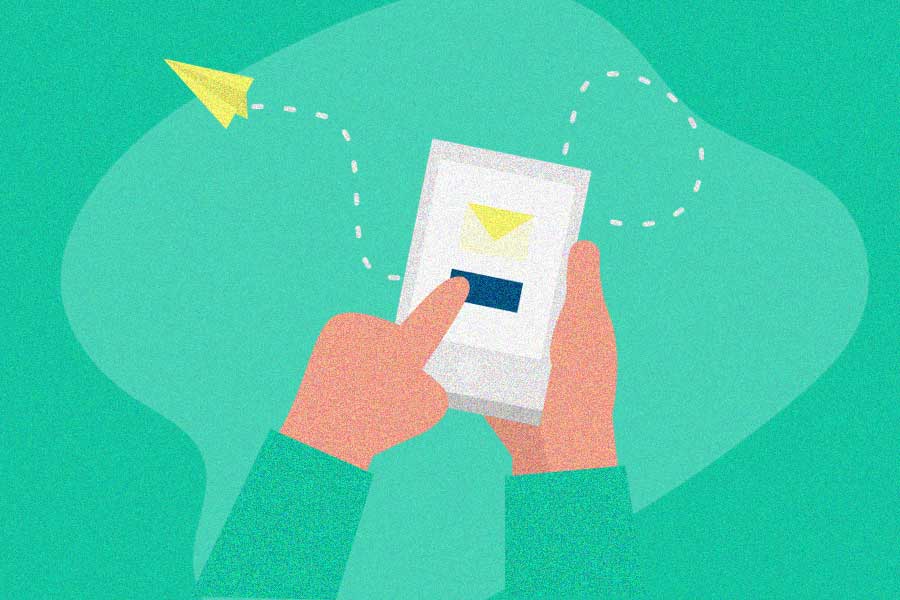No matter how many new customers you get, if they’re only making one-time purchases, they’re not enough to grow your business. To gain a competitive advantage, you need to build strong relationships with customers, gain their trust, and encourage their loyalty.
Here are five proven ways to make your brand more appealing to both new and existing customers.
1. Choose a memorable domain name
In the digital marketing landscape, a domain name is your brand’s ID. When anyone types your brand name into their browser, your website is one of the first things they’ll see in the results.
Start by choosing an authentic domain name. It should be simple, memorable, and on-brand. If possible, include your brand name in the domain to better rank in online searches.
Along with your domain name, you should also pick the right TLD (top-level domain). While .com is the most popular option out there, many would say it lacks creativity (and can be extremely hard to secure). That is why many brands look for its alternatives, such as .co, .io, or the .me domain. We see companies like VSCO (vsco.co), CodePen (codepen.io), and Themify (themify.me) use these TLDs as a way to stand out as a more modern company.
2. Humanize your brand
We live in a hyperconnected age where companies can track invaluable data into customer feelings, needs, fears, and desires. With so many analytics tools and metrics readily at our fingertips, it can be easy to forget the human aspect of your online presence.
Instead of being overly promotional, brands need to build meaningful relationships with customers – ones that encourage a human connection and customer loyalty.
- Share team photos and stories on your website and social channels. Showing the faces and names behind your brand can build trust and a true connection with your target audience.
- Use live chat support to get back to your customers in real-time. Respond sincerely and make customers feel like they are chatting with a friend, not a brand.
- Use casual, everyday language instead of technical jargon. It’s important for customer interactions to be as friendly and natural as possible.
- Use humor, too. Apart from sharing valuable content and promotions, posting funny memes and GIFs can humanize your brand.
- Invest in a social media monitoring software to track your brand mentions. Brand mention tools help your marketing and customer support team effectively monitor and respond to customer interactions in real-tine.
3. Show social proof
The term “social proof” was coined in 1984 by Robert Cialdini. In his book, Influence, Cialdini explains a social phenomenon where individuals conform to the actions and attitudes of the group. This theory is a foundation in the digital marketing landscape, and can help you gain customer trust and drive sales.
- Enable customer reviews. According to a research study, the average customer reads ten online reviews before making a purchase decision. To build up your brand’s reviews, it’s recommended to claim your Google My Business listings, encourage customers to post on third-party review sites, and display customer ratings and testimonials on your website.
- Show customer testimonials. Testimonials can boost conversions on sales pages by 34%. It’s also beneficial to accompany testimonials with images or even videos, which help prove the review is authentic and personal.
- Leverage “wisdom of the crowd.” Show the total customer or review count on your website. If someone sees a lot of satisfied customers using a brand or product, they’ll want to join in (or at least see what the fuss is about) and will complete their purchase faster.
- Show industry certifications. Customers want to buy from brands they trust. Unfortunately, repeating that your products or services are high-quality is not enough. You need to prove it, too. Displaying any awards, certifications, or recognitions can help.
- Write case studies. Your target audience wants to hear exactly what you did to help your existing customers. Apart from providing a bunch of statistics, consider telling an engaging story around them. One effective strategy is to create customer success stories or case studies. Detailed and data-backed, case studies tell the story of your customer – what problems they faced before they started working with you, what their goals were, and how you helped the customer achieve them.
4. Reward customer loyalty
Providing great products may be enough to attract customers, but not retain them. Customers expect you to reward their loyalty. Over 70% of customers will buy from a company that has a loyalty program over one without.
Here are a two actionable steps to take for a successful customer loyalty program:
- Give customers a strong reason to be a part of your program. It’s not necessarily all about money and savings. Your loyalty program should inspire customers and show them you share their values. Start by answering the “why” behind your brand. Amazon Prime, for example, costs $100 yearly, and yet, it has 112 million members. People pay membership for more than just free two-day shipping. They also get a lot of value, with free streaming and access to groceries.
- Incentivize different customer actions. There are different types of customer loyalty. For example, if a customer has not purchased from you recently, but is regularly sharing your blog posts and engaging with your social media content, reward them for that. You should also create a referral program for your loyal customers and incentivize them for every friend they refer.
5. Personalize marketing campaigns
Personalization is the key to a successful brand presence. Today, customers do not care about uniform brand messages and proposals – they choose companies that understand their needs and expectations. In fact, research shows 63% of consumers expect personalization to be a standard of service.
There are numerous ways to insert personalization into your digital marketing campaigns.
- Segment your email list. Just sending a bunch of generic emails won’t help you boost open rates and conversions. Instead, you should segment your email list. There are multiple criteria to consider, from your target audience’s age to their previous purchases. When signing up for your email list, you could ask a customer what kind of content they would like to receive from you. This enables you to slice your email newsletter list down into smaller segments and serve your customers the content and deals they really care about.
- Personalize on-site experiences with your brand. If you have ever browsed Amazon or purchased from it, you’ve probably noticed its homepage is never the same. Showcased products are based on your browsing history and purchases. Amazon even allows customers to review their browsing history and eliminate irrelevant or outdated searches. This has helped the ecommerce juggernaut take its customer experience to a whole new level and encourages quick, repeat purchases.
- Before check out, recommend a few complementary products. For example, if a customer adds a pair of flip flops to their shopping cart, why not suggest them to complete the outfit by purchasing a gorgeous sun hat?
- Use chatbots. Artificial intelligence has created new personalization opportunities for brands. Chatbots are a perfect example of how this works. You can use AI chatbots to casually chat with customers, provide personalized product recommendations, or even sell products. Sephora’s Messenger bot, for example, lets users book makeup appointments in just a few clicks. And before making purchases, customers can virtually try on different products and looks.
Ready to create exceptional customer experiences?
Just developing quality products is not enough to set yourself apart in a hypercompetitive digital marketing landscape. Brands need to focus on customer experiences and relationships, as well. You can conclude from the practices mentioned above that today’s digital marketing is highly user-centric. By adapting your strategies to the customer’s specific needs and expectations and using a variety of business intelligence tools, you will maximize your sales and encourage customer loyalty in the long-run.

Emma Worden is a digital marketer and blogger from Sydney. After getting a marketing degree, she started working with Australian startups on business and marketing development. Emma writes for many online industry publications, is an Executive Editor at Bizzmark blog, and a guest lecturer at Melbourne University. Follow Emma on Twitter.




